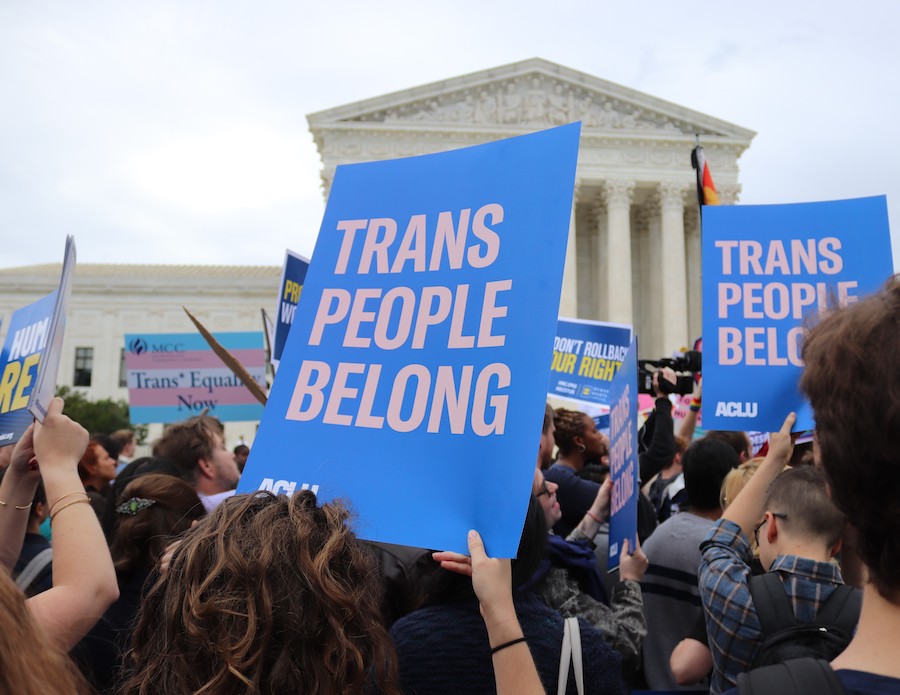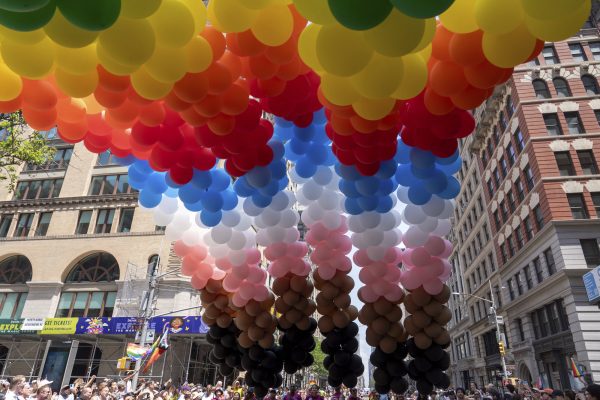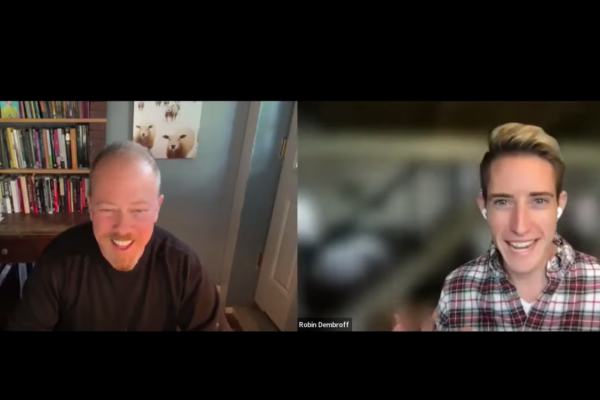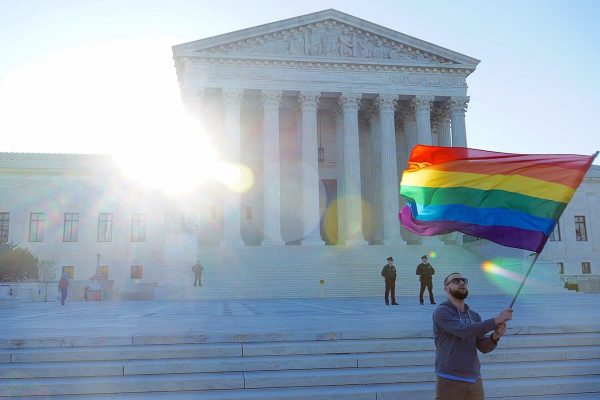The recent flurry of anti-trans bills in Republican-led states has drawn attention to the legal landscape that transgender people find themselves in. What many don’t realize is that trans people have been challenging transphobic laws and policies, often successfully, long before the current onslaught became a feature of today’s “culture wars.”
I recently spoke with Jennifer L. Levi and Shannon Price Minter, two litigators who have been deeply engaged in the movement for transgender rights for decades—well before public opinion shifted in favor of trans rights and before most gay rights groups began to embrace the issue. Our conversation traces a partial history of the litigation side of the movement, including the difficulties of doing this work when trans people were not yet legible to judges, decisions about framing anti-trans animus as sex discrimination, the relation between sexual orientation and gender identity/expression in litigation strategies, and the centrality of feminism to their work.
Levi is Senior Director of Transgender and Queer Rights at GLBTQ Legal Advocates & Defenders (GLAD). She is also a law professor at Western New England University. Minter has worked at the National Center for Lesbian Rights (NCLR) since graduating from law school in 1993. He has been NCLR’s Legal Director there since 2001.
Between them, they’ve challenged laws and policies denying medical care to transgender prisoners and youth, excluding same-sex couples from marriage, barring transgender students from school sports and restrooms, denying employment or public accommodations to transgender people, expelling transgender individuals from the military, rejecting transgender asylum seekers, and discriminating against LGBT parents. They are currently involved in legal challenges to the raft of new anti-trans laws.
—Paisley Currah
Paisley Currah: Instead of starting at the present moment of anti-trans hysteria, I wanted to begin at a moment of relative optimism: the Supreme Court’s 2020 ruling in Bostock v. Clayton County, which held that discrimination based on sexuality or gender identity is prohibited by Title VII of the Civil Rights Act of 1964. The ruling seemed like the apex of years of advocacy for transgender rights—and somehow it came from a conservative court. How did we get there?
Jennifer Levi: Bostock was a hugely significant case—definitely the culmination of a tremendous amount of foundational work that had been done to build out protections for transgender people, to reverse exclusions, and to create more visibility about the legal issues that transgender people faced.
When I started working in this area, there were almost no laws protecting transgender people. Courts held that federal law did not cover transgender people. Health insurance plans, both public and private, categorically denied coverage for gender transition medical care. Transgender parents were vulnerable; family courts stripped some transgender parents of their legal status or barred them from seeing their children.
Very few legal organizations beyond the National Center for Lesbian Rights (NCLR) were doing any work for transgender people in the 1990s. But slowly, over the last two decades, more legal groups began working on these legal issues to build an impressive body of positive case law.
Shannon Minter: Almost always by the time you get that kind of a Supreme Court victory, it is because there have been decades of laying a foundation for it—and because ruling differently would require the Court to go against years of precedent.
That was certainly the case for Bostock. What made it a nail biter—and helps to explain why there was so much uncertainty about how the Court would rule, and jubilation when they ruled as they did—was the Court’s incredibly conservative turn. But transgender litigants have been making the sex discrimination argument since the 1970s. That’s when those very straightforward legal arguments—that discrimination against a trans person is sex discrimination—were first articulated.
Initially, the courts were not very receptive. Some EEOC cases succeeded in lower courts in the ’70s, but then there was a period of time when the courts rejected those claims under Title VII and Title IX as well as state sex discrimination laws. In the wake of these losses, people turned to legislation that would specifically protect trans people. The strategy was either to define sex or gender to clarify that gender identity and expression were included, or, more rarely, to adding another category to existing protections: namely, the category of gender identity.
A lot of this thinking about sex discrimination goes back to the International Conference on Transgender Law and Employment Policy, which Phyllis Frye, now a judge, started in 1992. That’s where I first heard people making the arguments that discrimination against transgender people is sex discrimination. I remember sitting in panels and hearing people make the argument that if somebody was discriminated against for changing their religion from Catholic to Baptist, there’s no way an employer could get away with that—saying that they’re not being discriminated against because the person used to be Catholic or because now they’re Baptist, but because they changed their religion.
No one would question that was discrimination based on religion, and the same should apply to someone who goes through a gender transition. All the arguments that were presented to the Supreme Court that led to the successful ruling in Bostock had been made by transgender advocates for many, many years, and then it started working in the courts. Jennifer herself brought some of the first successful sex discrimination cases on behalf of transgender people.
JL: Beginning in the late 1990s and beyond, we had a very intentional conversation within GLAD about trying to identify an area where that straightforward argument could be heard by the courts outside of the employment context. Because prejudice against transgender people was so widespread, we thought an employment discrimination case wasn’t the best way to go, because employers might defend themselves by saying they were simply responding to customer reactions or coworkers’ reactions. Of course, that’s what nondiscrimination law is supposed to reverse, but we felt like it was going to be a really big lift in the courts.
But then this case came in through our intake line, where a transgender woman had gone to apply for a bank loan and was denied the opportunity to borrow money because she was transgender. It felt like this incredible opportunity because, unlike the employment context, there could be no real justification other than prejudice. I’ve always been so inspired by NAACP lawyer Charles Hamilton Houston’s approach to building to a goal in a stepwise way but to try to do it through this multidimensional approach. Houston worked with organizers on the ground to build support for challenging Jim Crow laws while training lawyers to bring legal claims and building legal institutions to support those lawyers. At GLAD we focused on taking a similar approach to building case law to protect transgender people starting with a bank loan applicant.
Everyone at GLAD was on board, and I wrote the complaint the way I’d heard all these arguments being made, and the bank promptly filed a motion to dismiss. I was so confident—I went into my first argument in federal district court and argued against the motion, and the judge said, I’ll rule from the bench, give me ten minutes. I sat there thinking this was the easiest thing in the world. Our case made total sense, so of course the judge is going to rule from the bench. Ten minutes later the judge came back and granted the motion to dismiss. I was in shock. But that case, Rosa v. Park West Bank, went up on appeal, and we ended up getting it reversed.
PC: I’m glad that you mentioned Houston and strategic choices. As people who have been involved in this kind of litigation for such a long time, do you feel like you feel like the movement has successfully done that?
SM: The problem has never been coming up with the right legal arguments. Those are so simple and straightforward. I mean, how on earth could discrimination because the person was one sex and now they’re the other sex—how could that be anything but sex discrimination? It’s clearly about gender stereotypes. Sadly, there’s still an enormous amount of bias, and courts often just do not apply the law equally or fairly when it’s a transgender plaintiff. That’s probably still our biggest obstacle in winning any kind of cases on behalf of transgender people.
JL: That’s what we’re facing now in trying to challenge bans on medical treatment for transgender minors in cases across the country, including in Alabama and Florida. But I am interested in this historical record. With some early successes, it seemed like there was a growing appetite to bring cases making the sex discrimination claim on behalf of transgender litigants and that there were growing numbers of cases with positive outcomes. But there wasn’t a lot of visibility around that work, and it took longer—about a decade—to get LGBT legal organizations to make the argument that sexual orientation discrimination was sex discrimination under Title VII. I think that convergence brought resources in—that shared effort to try to challenge the categorical exclusions for both sexual orientation and transgender status, which became the basis of the Bostock argument.
PC: So prior to that, sexual orientation discrimination cases were based on gay identity?
SM: Yes. But at the NCLR, all through the marriage cases from the 1990s through Obergefell in 2015, we made the sex discrimination argument in amicus briefs or in our own cases. There was always an internal battle about that. A lot of the movement was not on board and did not think that was the best argument; they wanted to highlight gay people as a distinct group and sexual orientation discrimination as a distinct category because they didn’t see the connection between anti-gay bias and sexism. But we kept pushing it because it was so clear that marriage bans, which rested on traditional gender roles in marriage, were a vestige of sexism and that establishing that connection would have broad positive implications for both women and LGBTQ people. I’m glad we did. Banning same-sex couples from marriage is sex discrimination, and even though Obergefell didn’t expressly rely on this argument, that decision goes on and on about the history of sex discrimination and marriage and all the ways that marriage used to treat men and women differently, husbands and wives differently.
So even though it wasn’t formally a sex discrimination decision, Obergefell helped lay a foundation for Bostock. Before Obergefell, federal courts were nervous about flatly holding that discrimination on the basis of sexual orientation is sex discrimination in employment, because if so, why wouldn’t that be true in marriage as well? Obergefell removed that impediment.
PC: I remember the feminist argument about marriage coming up in one of the first marriage equality cases in the country, in Vermont, where NCLR and GLAD made explicitly feminist arguments, which were embraced by one of the Vermont Supreme Court justices. Could you talk more about feminism and its relationship to your organizations, and the LGBT movement?
JL: There was a lot of feminist energy generally behind our work, especially the family-focused LGBT work. NCLR did a lot of family work on behalf of transgender as well as lesbian and gay parents. The commitment to that work came out of feminist organizing, feminist frameworks, and feminist thinking. Lesbians were central to creating legal institutions that stand behind parents at risk of having their children separated from them. Feminism is core to GLAD’s history, and I know it’s core to NCLR’s.
SM: Yeah, the whole reason NCLR was founded in 1977 was to represent lesbian mothers in child custody cases. At that time—the late seventies—these cases were not widely seen as civil rights cases; family law had not been framed or understood very broadly at that time to be a core civil rights issue. NCLR took on those cases, and then it quickly aimed to find some way for both women in a lesbian couple who were having kids to be recognized as legal parents. Second-parent adoption was the solution to that problem. You can see the trajectory from those child custody issues all the way to marriage and Obergefell. Family law has ended up being extremely critical and central to LGBT equality and civil rights. I think that’s part of why NCLR ended up doing so many marriage cases—that was already the air we breathed and the world we were in. GLAD, too, recognized the importance of family law work early on.
JL: GLAD was involved in establishing second-parent adoption in Massachusetts and also in Vermont under GLAD’s Civil Rights Director Mary Bonauto’s leadership. It was GLAD’s family law work in Vermont that forged relationships among lawyers that helped create a platform for marriage equality work. The family law work connected GLAD to Beth Robinson, who’s now on the Second Circuit Court of Appeals, and her law partner, Susan Murray. They, along with GLAD, brought the Vermont marriage case which resulted in the first high court decision requiring equal benefits for same-sex couples. And then the Massachusetts Supreme Judicial Court became the first to hold that same-sex couples have the freedom to marry. Those early victories created a platform and a framework for moving forward. Of course, there was lots of marriage work going on across the country; the Northeast wasn’t the only place. But it was feminist organizing and a focus on family law that laid a foundation for marriage equality.
PC: It’s so important to see that long trajectory, because a lot of people might think the first transgender person to have a case in front of the Supreme Court was Aimee Stephens, one of the plaintiffs in Bostock. Maybe you could talk about some other earlier momentous cases.
JL: As far as I know the first transgender litigant at the Supreme Court was Dee Farmer, a transgender woman who had been placed in a dangerous, high-security prison where she was raped and beaten by another inmate. She successfully argued that her Eighth Amendment rights had been violated by the “deliberate indifference” of prison officials. Dee largely represented herself throughout the case, which was resolved by the Supreme Court in 1994. She was and is a tremendous advocate. She is largely self-taught and made an important strategic legal decision to highlight her identity and experience as a transgender woman, which clearly had a positive impact on the Court.
SM: There’s also the Brandon Teena case, decided by the Nebraska Supreme Court in 2001. It involved a transgender man who was raped and murdered because he was transgender. It got national attention because he was horrifically mistreated. He reported the rape, and then the local authorities, including the sheriff, mistreated him terribly and put him through hell and didn’t make any reasonable efforts to apprehend the two men who had raped him. And then his rapists murdered him.
Teena’s mother brought a lawsuit after his death, alleging intentional infliction of emotional distress—a tort claim. It went all the way up to the State Supreme Court, and some very horrible arguments were made in that case, including that Teena had contributed to his own rape and murder by being transgender. That was the first time that Jennifer and I wrote an amicus brief on behalf of the World Professional Association for Transgender Health (WPATH), making the simple argument that nothing about a victim being transgender should diminish the responsibility of his attackers. The Nebraska Supreme Court ruled in his mother’s favor on all counts.
I reread that decision very recently. It’s a powerful decision. It is brutal to read because it recounts all the ways that Teena was not only assaulted but mistreated by the local authorities. Sadly, as I was reading it, I was thinking how timely that decision is right now because a lot of the prejudices and biases reflected in the way he was treated are coming back into public discourse and being validated again.
PC: You both are no doubt aware of the queer left critique of the military and marriage as institutions. As people who’ve been working on the ground with transgender clients for decades, how do you respond to that argument?
JL: The voices and perspectives of transgender people are as diverse as in any community, and the reality is that clients want equal treatment, equal opportunities. I’ve never thought that there’s any inconsistency between critiquing institutions and ensuring people’s opportunity to be part of those institutions. I couldn’t imagine a justification or an embrace of an exclusion for any other group from institutions as part of the interest in breaking down those institutions. Excluding one group from the institution as a starting point in order to break down that institution doesn’t seem like a principled way to challenge those institutions.
SM: I strongly agree. The double standard that often gets applied to transgender people and transgender plaintiffs is unfair—and sometimes infuriating. It’s hard to imagine that anyone would ever say, well, it’s okay to exclude interracial couples from the right to marry because we think marriage is an inherently reactionary institution or that we shouldn’t challenge the exclusion of women from the law profession because the law profession is inherently reactionary. It’s an absurd argument.
One form that is particularly unfair is the idea that whenever a transgender plaintiff brings a lawsuit, they have a responsibility to take on broad ideological issues that no one ever thinks to suggest a non-transgender plaintiff must address. If we bring a lawsuit on behalf of a transgender person who identifies as male or female, for example, we sometimes hear criticisms like, “By representing someone who identifies in a binary way, you’re reinforcing a gender binary”—and I’m like, “Well, why don’t you make that same critique for Lily Ledbetter when she brings her pay discrimination case? You wouldn’t. Or a gay man who is being sexually harassed at work.” There’s no reason that transgender litigants should bear an extra burden around gender that other litigants don’t bear.
PC: It annoys me no end when so often the value of transgender people is indexed to whether we’re going to break down the gender binary. Shannon, do you remember a conference at Cornell in 2009 where a participant critiqued a particular transgender marriage case as an example of bourgeois white supremacy reinforcing oppressive gender norms?
SM: Yes, it was my case. In fact, the plaintiff was a transgender, working-class Black man in Illinois fighting for custody of his thirteen-year-old son following a divorce. Against the recommendations of three therapists and the son’s own wishes, the court denied custody, ruling that the plaintiff’s marriage to his ex-wife was not valid because he was not legally male and that he therefore had no parental rights. (At the time, Illinois did not recognize same-sex marriage.)
I would just also say that most transgender people are ordinary people who want ordinary things, and there’s nothing wrong with that. They should be able to do all the ordinary things that bring happiness and fulfillment to a lot of people, such as entering into relationships, marrying, having children, having a job—if you want to serve in the military, serving in the military. Those things should all be open to LGBT people, including transgender people.
PC: It strikes me there’s a way that critique goes along with the idea that transgender people’s demands are only valid if they are tethered to some broader deconstructive or revolutionary purpose.
SM: That’s really true—like presenting transgender people as some kind of political vanguard, where their sole purpose is to advance some larger political agenda, not as a group of actually existing human beings who are being mistreated and denied the ability to do things that other people can do. It’s like when gay people started to seriously challenge inequality around marriage and were making some progress, there was a segment of the left that said, “actually, why don’t we just do away with marriage?” The reality is, many gay people wanted to marry. Legitimate disagreements about marriage persist on the left, but as long as marriage exists, it is unprincipled to exclude gay people from it.
PC: Can we talk about the current moment? I realized over the last few years that I have this myth of progress burned into my head even though I know better. Did you ever think that we’d come to this moment of rollbacks and bans on transgender care and state legislators rewriting the rules on sex classification? That we’d slide so far backward, so fast?
SM: Honestly, no, I did not foresee this backlash. We probably should have anticipated it, but I did not foresee it.
JL: I didn’t either. But I think we should have, and the backlash highlights the progress we’ve made. We are still on a forward trajectory, even if it doesn’t always feel that way; it’s just that visibility also brings backlash. Lack of understanding about transgender people’s lives and distorted images that falsely portray transgender people as threats to women and children are being exploited as political organizing tools in a polarizing moment.
SM: To understand what’s happening now it is important to go back to a point we made earlier: discrimination against transgender people is rooted in sexism. We can’t win equality for transgender people if we lose sight of that. Susan Faludi’s 1991 book Backlash made the point—and it’s still so timely—that every time there is progress in diminishing sexism, it is followed by aggressive backlash. That is the pattern of events in our country. And so from that perspective as well, the current attacks on transgender equality should not be a surprise.
In fact, it is becoming increasingly clear that attacking transgender people is an ideal vehicle to resuscitate reactionary views about women–often under the guise of “protecting” them. For example, several states have already passed and many more are considering laws that define women solely in terms of their reproductive anatomy and capacity. While these laws are ostensibly designed to eliminate legal recognition for transgender people, they undermine decades of legislation and court decisions establishing that women cannot be reduced to their reproductive role.
Boston Review is nonprofit and relies on reader funding. To support work like this, please donate here.








